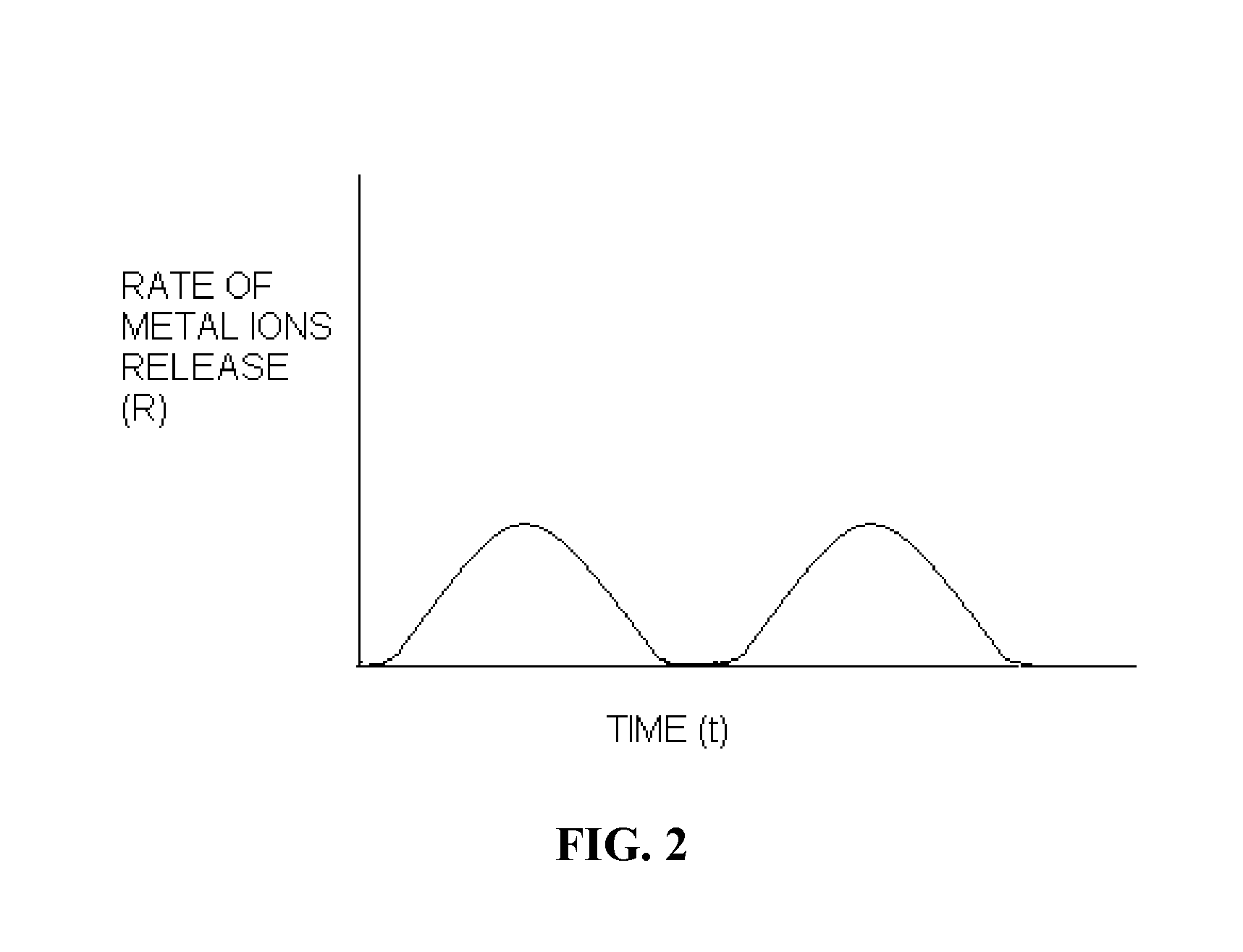Polymer chelator conjugates
a polymer chelator and conjugate technology, applied in the field of biocompatible polymer conjugate, can solve the problem of undesirable long-term in vivo residence tim
- Summary
- Abstract
- Description
- Claims
- Application Information
AI Technical Summary
Benefits of technology
Problems solved by technology
Method used
Image
Examples
example 1
Preparation of a Collagen-Conjugate
[0066](A) Commerically available 2,3-dihydroxybenzoic acid (10 mmol) is converted to the corresponding methyl carboxylate by conventional methods. The hydroxyl groups of the methyl 2,3-dihydroxybenzoate then are protected by conversion to the corresponding benzyl ethers by reaction with at least 2 equivalents of benzyl bromide in acetone or N,N-dimethylformamide in the presence of an excess of potassium carbonate which scavenges the acid generated. The resulting methyl 2,3-dibenzyloxy benzoate is hydrolyzed and converted to the corresponding activated ester which in this case is the pentafluorophenyl ester using conventional techniques.
[0067]At least 30 equivalents of the active ester described above is combined with collagen under conventional amide forming conditions to provide for a plurality of protected chelating moieties bound to the collagen. Hydrogenation yields the 2,3-dihydroxyphenyl moiety. The hydroxyl groups possess chelating propertie...
example 2
Preparation of Micronized Placental Tissue
[0069]Amnion / chorion tissue grafts used here to produce the micronized particles were produced by the process described in US 2008 / 0046095, which is incorporated by reference in its entirety. Tissue grafts (4 cm×3 cm) and two 9.5 mm steel grinding balls were placed in 50 mL vials and the vials subsequently sealed. The vials were placed in the Cryo-block, and the Cryo-block was placed in a Cryo-rack. The Cryo-rack was placed into a liquid nitrogen holding-Dewar flask. Tissue samples were subjected to vapor phase cooling for no more than 30-60 minutes. The Cryo-rack was removed from the Dewar flask, and the Cryo-block was removed from the Cryo-rack. The Cryo-block was placed into the Grinder (SPEX Sample Prep GenoGrinder 2010) and set at 1,500 rpm for 20 minutes. After 20 minutes had elapsed, the tissue was inspected to ensure micronization. If necessary, the tissue was placed back into the Dewar flask for an additional 30-60 minutes, and move...
example 3
Preparation of Tissue Grafts with Micronized Placental Tissue
[0070]Various modifications and variations can be made to the compounds, compositions and methods described herein. Other aspects of the compounds, compositions and methods described herein will be apparent from consideration of the specification and practice of the compounds, compositions and methods disclosed herein. It is intended that the specification and examples be considered as exemplary.
[0071]A detailed description of reinforced placental tissue grafts is provided in U.S. Patent Application Ser. No. 61 / 683,699 filed Aug. 15, 2012 and entitled REINFORCED PLACENTAL TISSUE GRAFTS AND METHODS OF MAKING AND USING THE SAME which application is incorporated herein by reference in its entirety.
[0072]A detailed description of making and using micronized placental tissue and extracts thereof is provided in U.S. Patent Application Ser. No. 61 / 683,700 filed Aug. 15, 2012 and entitled MICRONIZED PLACENTAL TISSUE COMPOSITIONS A...
PUM
| Property | Measurement | Unit |
|---|---|---|
| tensile strengths | aaaaa | aaaaa |
| particle sizes | aaaaa | aaaaa |
| particle sizes | aaaaa | aaaaa |
Abstract
Description
Claims
Application Information
 Login to View More
Login to View More - R&D Engineer
- R&D Manager
- IP Professional
- Industry Leading Data Capabilities
- Powerful AI technology
- Patent DNA Extraction
Browse by: Latest US Patents, China's latest patents, Technical Efficacy Thesaurus, Application Domain, Technology Topic, Popular Technical Reports.
© 2024 PatSnap. All rights reserved.Legal|Privacy policy|Modern Slavery Act Transparency Statement|Sitemap|About US| Contact US: help@patsnap.com










